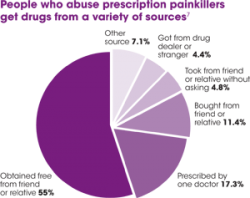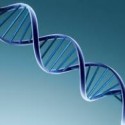Hidden Signs of Prescription Painkiller Addiction
 The number of people who suffer from prescription drug addiction is simply alarming—it’s in the millions and more people seemingly become addicted every single day. Prescription drugs are creating the fasting growing addiction epidemic ever! In fact, this substance abuse issue poses significant problems for both the patients and the physicians because there is a typical scenario that tends to occur all too often & it goes something like this:
The number of people who suffer from prescription drug addiction is simply alarming—it’s in the millions and more people seemingly become addicted every single day. Prescription drugs are creating the fasting growing addiction epidemic ever! In fact, this substance abuse issue poses significant problems for both the patients and the physicians because there is a typical scenario that tends to occur all too often & it goes something like this:
A terrible accident occurs, a vehicle crash, slip or fall, or some other serious injury of the neck, back or other area of the body. The patient is prescribed prescription painkillers to treat the pain that is associated with the injury and the patient takes the medication EXACTLY as prescribed with no worry of developing an addiction because they are taking a prescribed medication that their own doctor gave to them. Unfortunately, physical dependence does set in and over time, the patient begins to take more of the medication in order to alleviate the pain. Ultimately, addiction is the end result—despite the patient taking the medication as prescribed and not realizing the risks that are involved.
When this happens, the addiction often goes untreated and in fact, unnoticed for quite some time because even close friends and family members have a difficult time coming to the conclusion that the individual they care about is showing signs of addiction. You see, many family members will attribute changes in attitude, appearance and behaviors to the necessary use of the prescription painkillers and not to the physical dependence that has developed. This allows the addiction to continue to spiral out of control and build to a point in which it becomes very difficult to treat.
 When prescription painkillers are prescribed for a legitimate purpose, it can be difficult to recognize the signs of addiction. These hidden signs are what allows the addiction to set in, take over and become a major problem in an individual’s life. Major changes in personality or mood are the first sign to pay attention to but there are also some other hidden signs that you may catch on to after a while such as:
When prescription painkillers are prescribed for a legitimate purpose, it can be difficult to recognize the signs of addiction. These hidden signs are what allows the addiction to set in, take over and become a major problem in an individual’s life. Major changes in personality or mood are the first sign to pay attention to but there are also some other hidden signs that you may catch on to after a while such as:
- Increased frequency of prescription painkiller use or increased dosages. This may be the result of the doctor increasing the dose for the patient legitimately or the patient may just begin to take the drug more often or in larger amounts. Some may even start to combine different medications in order to feel the same effects.
- Withdrawal from friends, family and social networks or changes in social networks. As addiction sets in, the individual may no longer spend quality time with friends or family members and they may even begin to hang out with different people such as others who also use prescription drugs.
- Defensive remarks when addiction or painkiller use comes up. Many people who become addicted to any substance also become defensive about their use of the substance. Denial is the worst enemy and it’s also a sure sign that there is in fact a problem. If you’ve tried to talk with your friend or loved one about their use of prescription painkillers and he or she has been very defensive about it, there’s a good chance that addiction is part of the equation.
Treatment for Prescription Painkiller Addiction
If you or someone you know is addicted to prescription drugs, the most important thing to do is to seek immediate help. Treatment for prescription addiction is available to assist you in getting past the pain and getting well. Even if chronic pain is a problem, there are treatment regimens that can work to reduce the pain, eliminate the need for opiate based prescription painkillers that are highly addictive and get your life back on track. For immediate help, call 888-646-0635Who Answers? to talk with a rehab specialist today.










